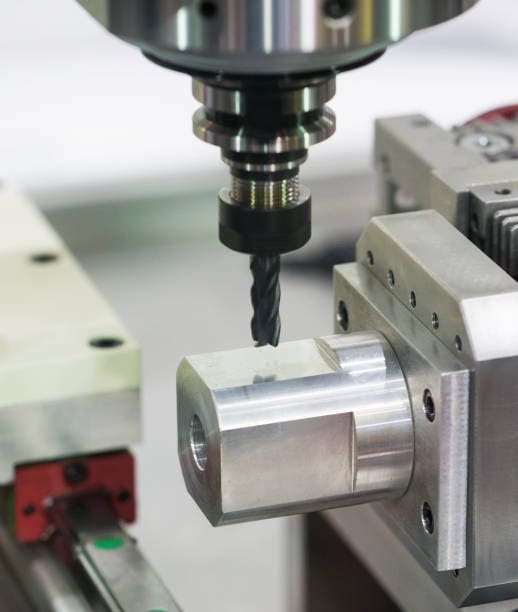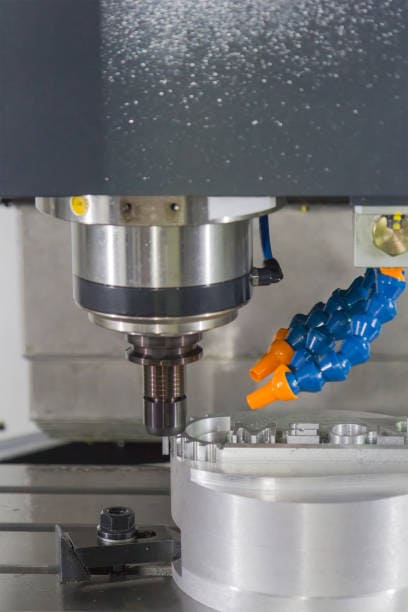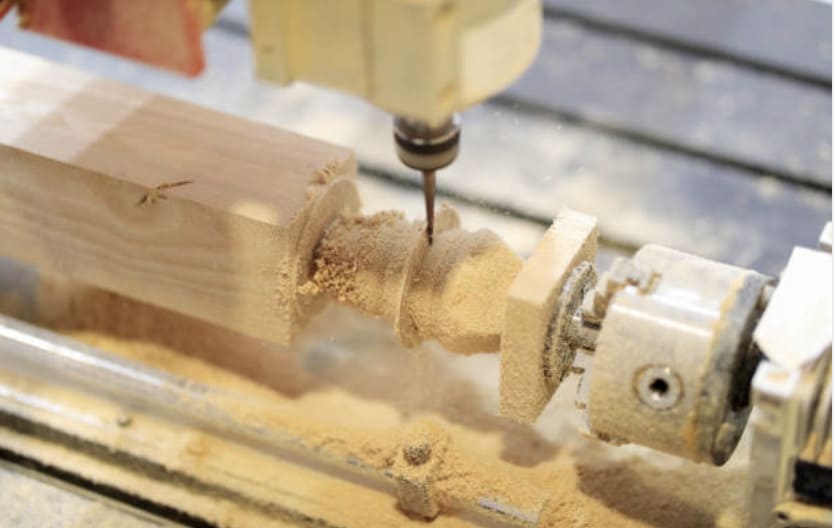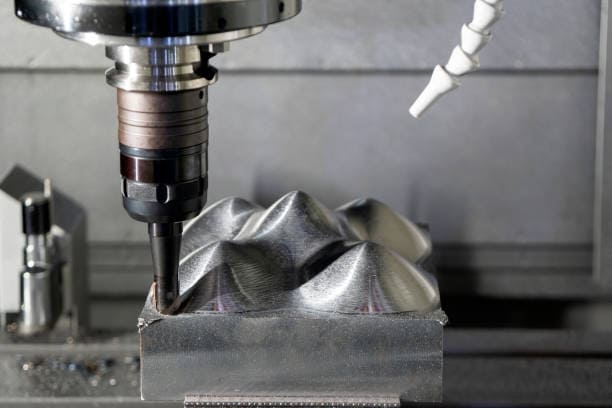Introduction
CNC spindle deflection can be a subtle yet significant issue that affects the precision of vertical CNC milling machines. Deflection results in deviations from the intended toolpath, which can negatively impact the accuracy and surface finish of the machined part. For industries where precision is crucial, calculating spindle deflection helps in making adjustments to avoid poor-quality results. This article delves into what spindle deflection is, how to measure it, and how to calculate it accurately, offering insights into minimizing its impact.
Understanding Spindle Deflection in CNC Milling Machines
Spindle deflection is the bending or displacement of the spindle under cutting forces. The amount of deflection depends on various factors, including spindle design, material properties, and the cutting conditions. While small deflections may go unnoticed in some operations, they can lead to significant errors in applications requiring tight tolerances. Recognizing and managing spindle deflection is essential for improving both performance and durability in CNC machines.
The Basics of Spindle Deflection
At its core, spindle deflection occurs when the forces acting on the spindle during cutting exceed its ability to remain straight. The deflection is a function of the stiffness and length of the spindle, the load applied by the cutting tool, and the material being machined. The greater the stiffness of the spindle, the less it will deflect. However, even the stiffest spindles will experience some deflection under heavy loads.

Factors Influencing Spindle Deflection
Several factors contribute to spindle deflection in CNC milling machines, including:
- Spindle Length and Diameter: Longer spindles are more prone to deflection than shorter ones, while thicker spindles offer greater stiffness.
- Material Type: The material of both the spindle and the workpiece influences deflection. Harder materials generate higher cutting forces, which can increase deflection.
- Cutting Conditions: The speed, feed rate, and depth of cut all affect the cutting forces exerted on the spindle.
- Tooling: The type and size of the cutting tool also play a role, as larger tools can apply more force to the spindle.
Key Components of a Vertical CNC Milling Machine Spindle
Anatomy of a CNC Spindle
A CNC spindle is composed of several key components, each contributing to its performance and susceptibility to deflection. These include the spindle shaft, bearings, housing, and the motor driving the spindle. The interaction between these parts determines how well the spindle can resist bending forces during cutting.
- Spindle Shaft: The main structural element of the spindle, the shaft’s material and dimensions determine its stiffness.
- Bearings: Bearings support the spindle shaft and minimize movement, helping reduce deflection.
- Tool Holder: The tool holder connects the cutting tool to the spindle and plays a role in how forces are transferred to the spindle during operation.
Role of Bearings in Minimizing Deflection
Bearings are critical in controlling spindle deflection. High-quality bearings help maintain spindle alignment by supporting the shaft and reducing unwanted movement. CNC machines typically use precision bearings such as angular contact or ceramic bearings to improve stiffness and reduce deflection.
Measuring Spindle Deflection: Tools and Techniques
Step-by-Step Guide to Measuring Spindle Deflection
To accurately measure spindle deflection, the following steps can be followed:
- Mount a Dial Indicator: Attach a dial indicator to a stationary point on the CNC machine.
- Apply Force to the Spindle: Use a force gauge to apply a known force to the end of the spindle.
- Record Deflection: As force is applied, record the amount of deflection from the dial indicator.
- Calculate Deflection: Use the recorded deflection and applied force to calculate the spindle stiffness and deflection.
This method provides a direct measurement of spindle deflection, allowing operators to make adjustments to cutting parameters or spindle settings to minimize deflection.
Traditional Methods vs. Modern Technology
Historically, spindle deflection was measured manually using dial indicators and force gauges. However, modern technology offers more advanced techniques such as laser-based measuring tools that provide higher precision and less user error. Modern software can also predict spindle deflection based on machine and material parameters, reducing the need for manual measurements.
Calculating Spindle Deflection: Formulas and Examples
Understanding the Mathematics Behind Deflection Calculation
The deflection of a spindle is typically calculated using the formula derived from beam deflection theory:
δ = (F * L³) / (3 * E * I)
Where:
- δ = Deflection (mm or inches)
- F = Applied force (N or lbs)
- L = Length of the spindle (mm or inches)
- E = Young’s Modulus of the spindle material (N/mm² or psi)
- I = Second moment of area (mm⁴ or in⁴)
This equation assumes the spindle behaves like a simple beam under load. Young’s Modulus (E) depends on the material used in the spindle, with higher values indicating stiffer materials.
Practical Examples of Spindle Deflection Calculations
Let’s consider an example where a CNC spindle experiences a force of 1000 N over a length of 300 mm. Assuming the spindle is made of steel, with a Young’s Modulus of 200 GPa and a second moment of area of 500 mm⁴, the deflection can be calculated as follows:
δ = (1000 * 300³) / (3 * 200 * 10³ * 500) δ = 0.09 mm
This small deflection might seem negligible, but over time, repeated deflection can affect machining accuracy.

Conclusion
Spindle deflection in vertical CNC milling machines is an unavoidable challenge, but understanding and calculating it can help improve machining accuracy. By considering factors such as spindle length, material, and cutting conditions, operators can minimize deflection and ensure high-quality results. Advanced techniques and technology offer new ways to measure and compensate for spindle deflection, ensuring that even complex projects are completed with precision.
Frequently Asked Questions
- What causes excessive spindle deflection in CNC machines?
Excessive spindle deflection can be caused by high cutting forces, improper tool selection, or inadequate spindle support. - How can I reduce spindle deflection during heavy milling?
To reduce spindle deflection, use a shorter tool, decrease cutting depth, and ensure proper bearing support in the spindle assembly. - What role do bearings play in reducing spindle deflection?
Bearings provide support to the spindle shaft, reducing unwanted movement and helping to maintain alignment during cutting operations. - Can spindle deflection affect surface finish quality?
Yes, spindle deflection can lead to poor surface finish by causing the cutting tool to deviate from the intended path. - Are there modern tools for measuring spindle deflection?
Yes, modern tools such as laser-based measuring systems and software can help detect and calculate spindle deflection more accurately than traditional methods.
Key Takeaways
- Spindle deflection occurs due to cutting forces acting on the spindle during machining.
- Calculating deflection requires an understanding of the spindle’s length, material, and load conditions.
- Proper bearing selection and maintenance play a crucial role in minimizing spindle deflection.
- Advanced tools and technology can assist in accurately measuring and compensating for spindle deflection.
- Reducing deflection leads to better machining accuracy and surface finish quality.

- RicoCNC has a team of professionals who have been engaged in the design, production, sales, and maintenance of electro spindles for many years. Our company accepts the purchase of various types of CNC spindles.
water-cooled CNC spindle motors
Edge banding machine spindle motors.
- If you need any CNC spindle, please contact us.

